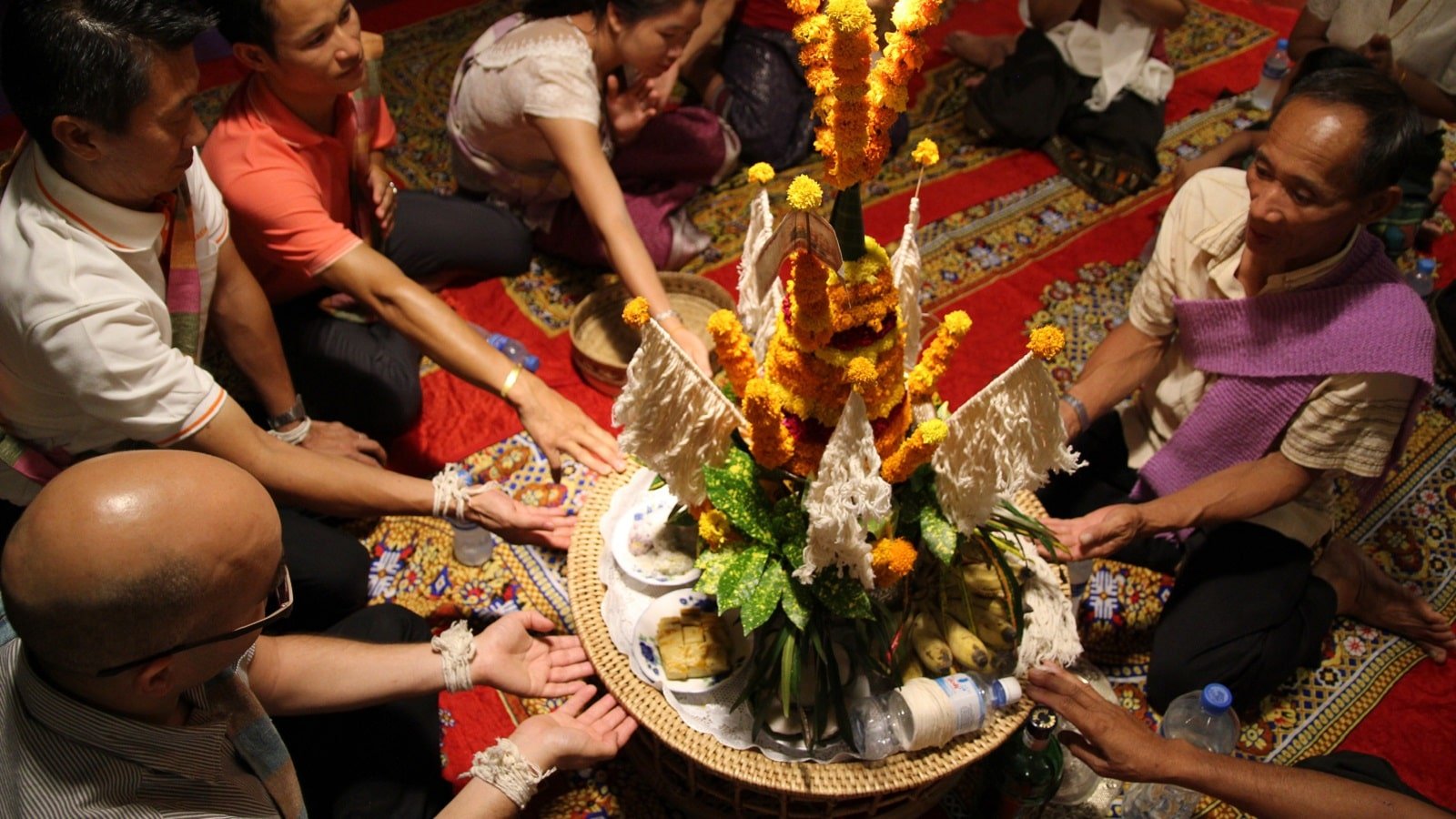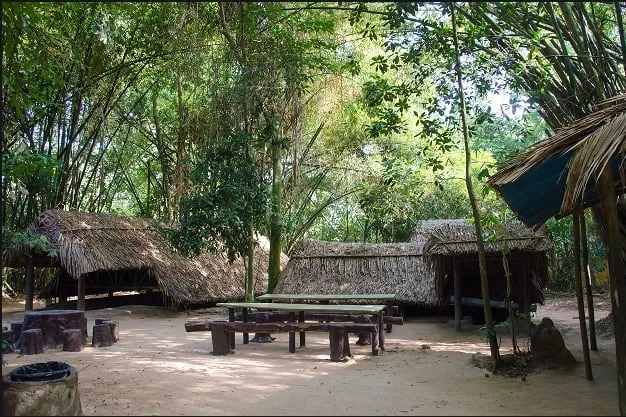Contents
ToggleWhat Is the Baci Ceremony in Laos?
SEO Keywords: Baci ceremony Laos, Lao cultural traditions, Sou Khuan meaning
The Baci Ceremony (also called Sou Khuan, meaning “calling the soul”) is one of the most sacred and symbolic traditions in Lao culture. Rooted in animist and Buddhist beliefs, it revolves around the idea that each person has 32 spiritual components—called khwan—that influence their physical and emotional well-being.
When someone experiences illness, grief, travel, or major life transitions, these spirits may wander, causing inner imbalance. The Baci ceremony is performed to recall these spirits, restore harmony, and invite good fortune, health, and protection.
The ritual’s core gesture is the tying of white threads around a person’s wrists—each thread representing a blessing.
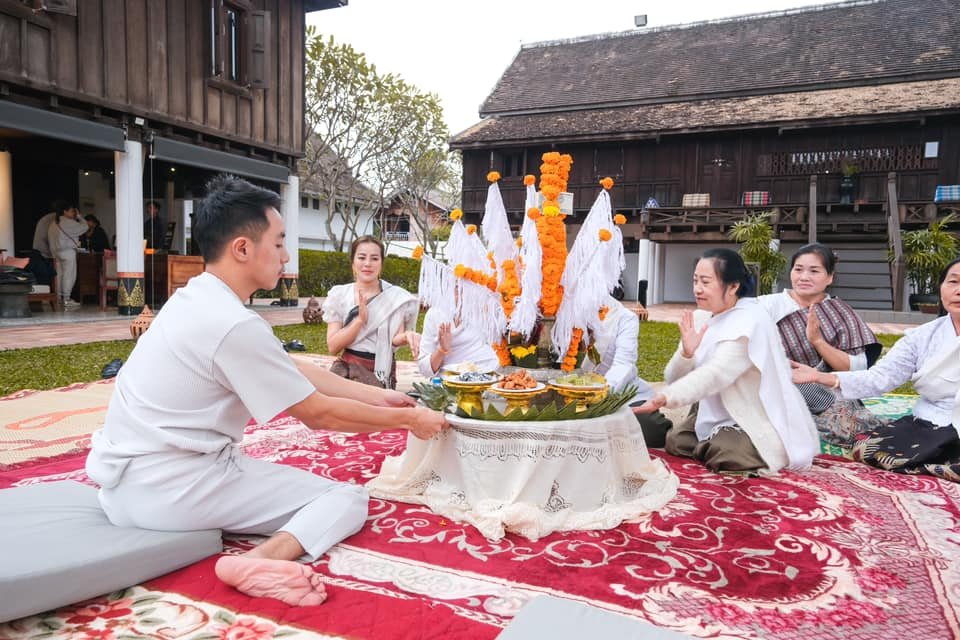
When Is the Baci Ceremony Performed?
SEO Keywords: Baci ceremony occasions, Lao rituals for travelers
The beauty of the Baci lies in its flexibility—it’s performed for both joyous and solemn occasions.
✨ Common Moments for a Baci:
- Weddings & engagements
- Births and naming ceremonies
- Welcome or farewell of travelers
- Lao New Year (Pi Mai) celebrations
- Return from monkhood or long journeys
- Before exams, jobs, or life transitions
- Recovery from illness or loss
Whether you’re arriving in a Lao village or recovering from hardship, the Baci serves to reconnect you with your inner self and the community.
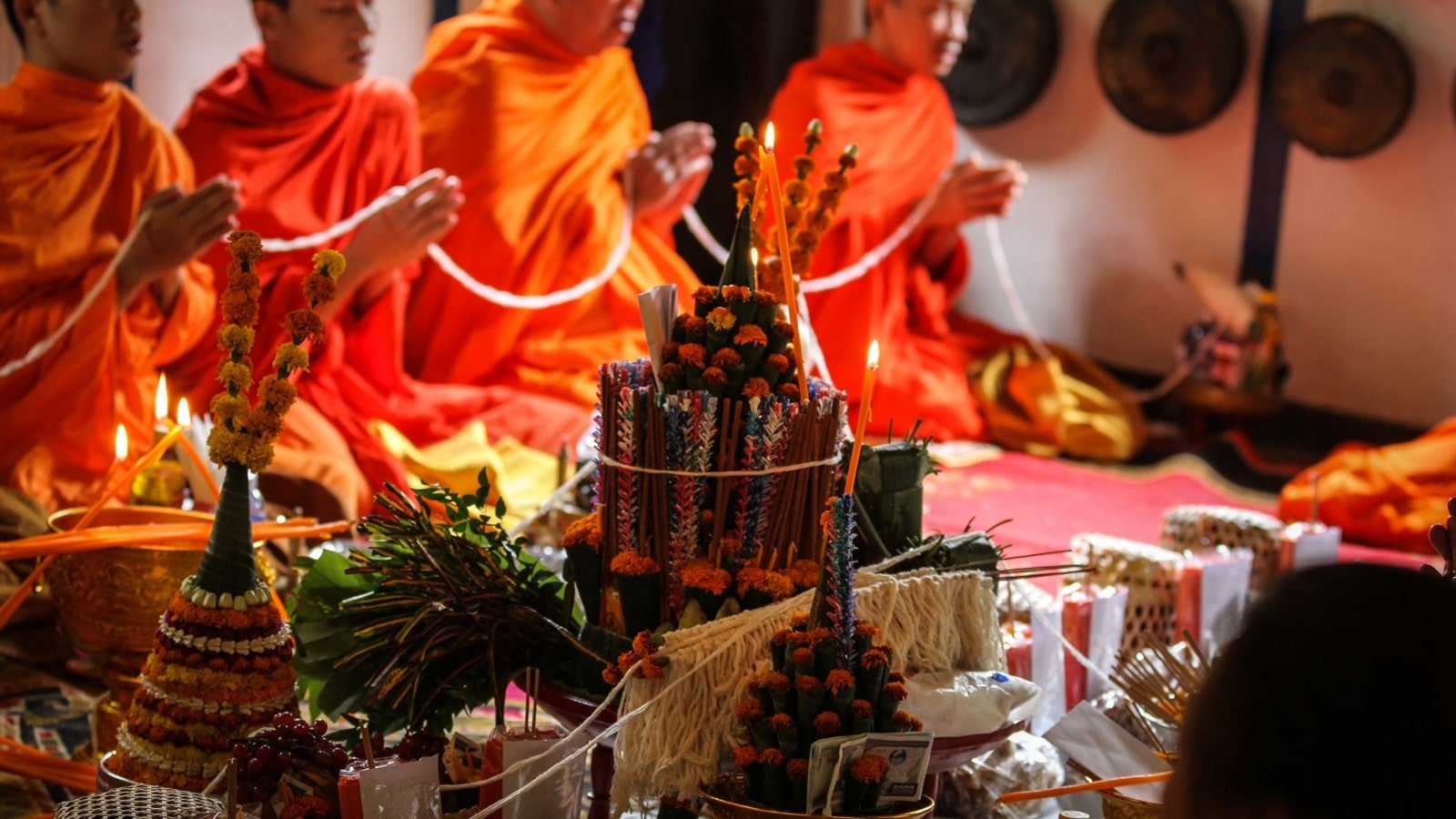
How Does a Baci Ceremony Take Place?
SEO Keywords: How to attend a Baci ceremony, Lao spiritual rituals
🌿 1. Preparation of the Pha Khuan (Blessing Altar)
At the heart of the ceremony is the Pha Khuan—a symbolic altar crafted from:
- Banana leaves and fresh flowers
- Incense sticks and candles
- Cooked rice and boiled eggs
- Lao whiskey (lao-lao)
Arranged like a spiritual tree, the altar is placed on the floor with friends and family sitting in a circle, holding hands in a symbol of unity.
🧙 2. Invocation and Thread-Tying Ritual
The ceremony is led by a respected elder or mor phon (ritual master), who chants prayers to summon the wandering spirits.
Then begins the most touching part: white cotton threads are tied around participants’ wrists, often accompanied by whispered blessings for:
- Health and safety
- Spiritual protection
- Prosperity and peace
- Good luck on the journey ahead
🙏 Guests hold their hands in the nop (prayer gesture) while receiving the blessing.
🎶 3. Traditional Music, Dance & Shared Meal
Some Baci ceremonies feature live music with the khene (bamboo mouth organ) and celebratory dancing.
After the ritual comes a communal feast featuring:
- Laap (minced meat salad)
- Tam Mak Hoong (green papaya salad)
- Khao Niao (sticky rice)
- Fresh herbs, grilled meat, and chili dips
The meal symbolizes gratitude, hospitality, and shared joy.
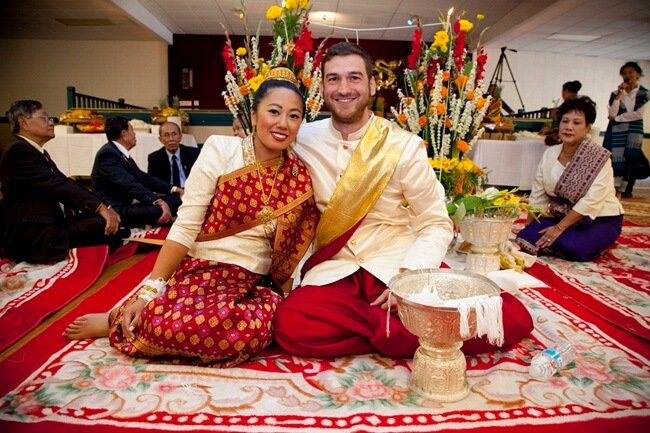
How to Respectfully Attend a Baci Ceremony
If you’re invited to a Baci during your travels in Laos, consider it a privilege—and honor the tradition with care.
👕 Dress Modestly
- Men: Long pants, collared shirt
- Women: Long sinh (Lao skirt) and blouse
Avoid bright, tight, or revealing clothing.
🎁 Bring a Simple Offering
While not mandatory, small tokens are appreciated:
- Flowers, candles, incense
- Local snacks or sweets
- Lao-lao (rice whiskey)
Ask your host in advance if anything specific is needed.
🧵 Participate in the Thread Ritual
- Don’t hesitate to ask politely to join the thread-tying—locals are often happy to include you.
- Tying a thread on someone else’s wrist is also a gesture of respect and goodwill.
✂️ Don’t Cut the Threads
- Tradition says to never cut the white threads.
- Let them fall off naturally or gently untie them after three days.
- Some people release the threads into a stream as a symbolic offering.
🗣️ Learn a Few Lao Phrases
A few words can go a long way in connecting with your hosts:
| Lao | English |
| Sabaidee | Hello |
| Khop jai | Thank you |
| Sok di | Good health |
| Pha khuan | Blessing |
| Seng khan | Good luck |
| Nyam sai | Enjoy your meal |
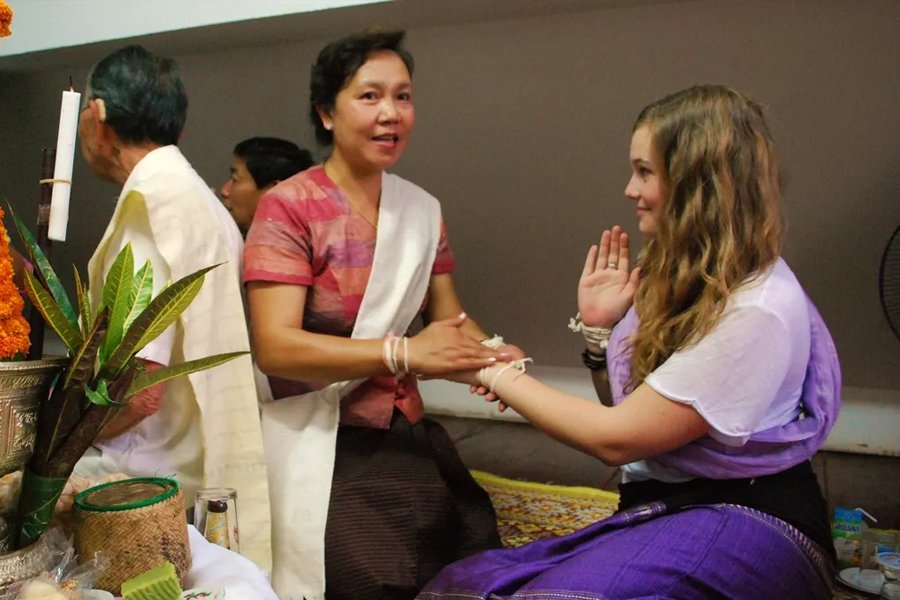
Final Thoughts: A Spiritual Window into Lao Identity
The Baci ceremony is much more than a spiritual act—it’s a living expression of Lao culture, resilience, and community spirit. In a rapidly changing world, the tradition continues to remind Laotians of their values: harmony with nature, unity among people, and care for the soul.
For travelers, participating in or witnessing a Baci offers a genuine, transformative cultural experience—one that transcends tourism and invites deep emotional and spiritual reflection.












